The Green Business Lab Simulates Real-World Solutions Toward the Triple Bottom Line
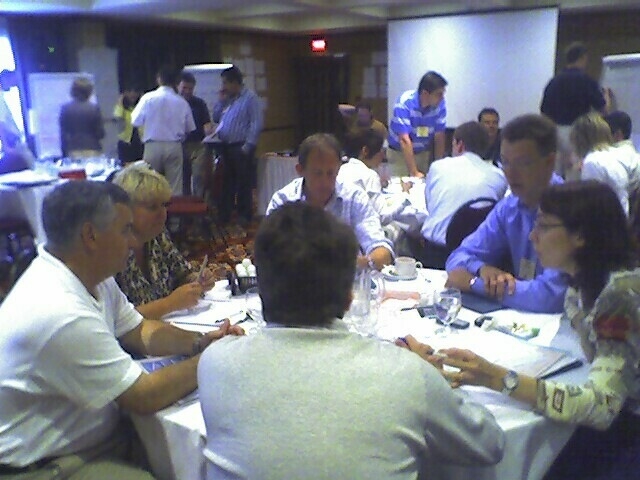
The Green Business Lab, created by Samantha Svoboda, is a sustainability-focused simulation designed to help businesses tackle real-world challenges while measuring success through the Triple Bottom Line: People, Profit, and Planet. By immersing participants in scenarios that reflect real-world complexities, the lab aims to help organizations across various industries identify sustainability opportunities, develop actionable strategies, and drive meaningful change. SBN Detroit interviewed Svoboda to explore the pressing sustainability challenges businesses face and how tools like The Green Business Lab aim to address these gaps in a practical, results-driven way. Q: What inspired you to create a business simulation focused on sustainability? A: The inspiration began decades ago when I was finishing my MBA at the University of Michigan. I wanted to focus on environmental work. I met Professor Stuart Hart and worked with him for several years to start what is now called the Erb Institute. As I collaborated across disciplines at U of M I saw a major opportunity. Sustainability requires collaboration, however. Various disciplines and schools each had their own style, specialized knowledge, and vocabulary. Through this work, I realized we needed a way to bring people together to have meaningful conversations about sustainability. Later, when teaching at Georgetown University, my students pointed out that most of the case studies we were using highlighted the weaknesses in existing sustainability practices, not successes. These, and other conversations, helped me to clarify my mission – creating a tool that could simulate real-world challenges, uncover perspectives, and foster collaboration. The Green Business Lab is the result: a customizable experience that helps companies and individuals tackle sustainability issues in a tangible, positive, actionable way, enabling them to focus on people, profit, and planet. Q: How does the business simulation work? A: The Green Business Lab operates like a flight simulator for business sustainability, offering participants a dynamic and immersive learning experience. Participants form executive teams and are tasked with leading fictional companies within an industry resembling real-world sectors like transportation or mobility products. Their mission: to achieve financial, environmental, and social goals aligned with the triple bottom line. Throughout three business cycles, participants make critical decisions on product design, operations, technology, marketing, distribution, customer use, and end-of-life processes. Each choice is tagged with Sustainable Development Goals (SDGs), and teams must navigate leadership challenges involving environmental and social issues. They receive detailed reports on financial performance, environmental impact, and social assessments. Teams present their vision, strategies, and outcomes during engaging, facilitated debrief discussions. They develop written plans for how to apply what they have learned to their work. By simulating real-world scenarios, participants develop practical decision-making skills, align sustainability goals with business strategy, and gain insight from diverse approaches taken by competing teams. Q: What are the specific challenges or gaps in business education that you see? A: Sustainability requires navigating some potentially thorny nuances. Participants bring deeply ingrained perspectives, assumptions, experiences, and knowledge about sustainability to the table. This can make discussions complex and sometimes emotional. As I have observed teams over the years, I’ve realized these perspectives need to be shared and addressed for a team to come to a common understanding of how to proceed. It is like going slow to go fast. It can take time to reach a shared mindset, but once the work is done, progress is generally rapid. Additionally, sustainability is vast in scope. Over the years, the focus has expanded from issues like ozone depletion to plastics in our oceans, climate change, biodiversity, and social equity. It impacts every aspect of business – supply chains, operations, technology, marketing, governance, and stakeholder engagement. The Lab strives to address these challenges by providing a transparent and comprehensive experience that accommodates diverse perspectives. It’s designed to help participants understand the interconnectedness of sustainability issues while fostering discussions that move beyond surface-level understanding. Q: What are the most common sustainability challenges organizations face when participating in the Lab? A: Every company has unique challenges based on its industry and business model. For example, a coffee company like Starbucks might focus on how climate change threatens its supply chain, while a consumer electronics company may focus on product durability, repairability, and circularity. At a high level, many companies use the lab to build awareness and get their arms around sustainability and how to approach it in a holistic way. They also use it to signal that sustainability is a priority. And finally, it’s an opportunity for leadership to gather feedback from participants about perceived challenges and opportunities within the organization. Q: What kinds of strategies or insights have emerged from participants? A: One powerful example involved a company whose business model encouraged rapid product turnover, which inherently led to increased waste. During the simulation, participants recognized the disconnect between their business model and their sustainability goals, sparking a critical conversation about how to reconcile these competing priorities. Another insight relates to the triple bottom line – financial, environmental, and social metrics. Many participants come into the lab expecting a formulaic approach to sustainability, where they can calculate and compare certain outcomes. What they often realize is that sustainability requires balancing competing priorities and working collaboratively to find high-leverage solutions. Q: How does engaging with real-world examples impact participants’ understanding of sustainability? A: Real-world examples provide context and clarity. These examples help participants see the practical implications of their decisions. At the end of the simulation, teams present their strategies and outcomes. Despite starting with the same information, each team often arrives at different conclusions. This diversity of thought demonstrates that there are multiple pathways to sustainability, and the key lies in identifying the opportunities that align with a company’s values and stakeholder priorities. Q: What do you see as the biggest barriers preventing businesses from fully embracing sustainability practices? A: One major barrier is the lack of clear roadmaps. Sustainability is a broad and complex topic, and many organizations struggle to define what “fully embracing” it even looks like. Additionally, sustainability requires a shift in mindset and a willingness
Perspective on Eliminating Food Waste
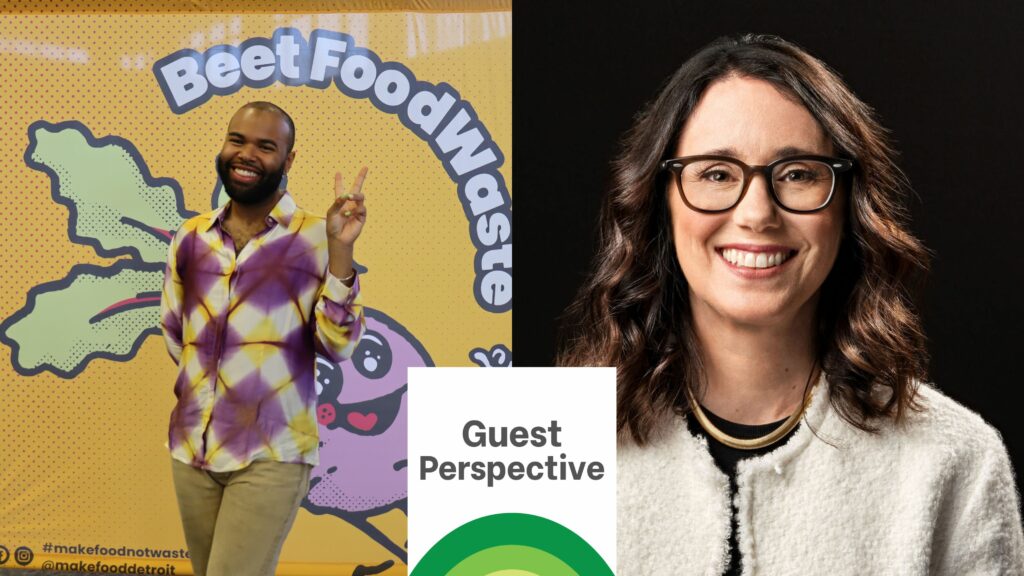
DANIELLE TODD, IS THE EXECUTIVE DIRECTOR OF MAKE FOOD NOT WASTE Landfilled food is one of the primary sources of climate change due to two main reasons. First, food decomposing in landfills emits methane, a greenhouse gas 25 times more potent than carbon dioxide. Second, landfilled food represents a waste of land, water, and transportation resources that cannot be reclaimed. Given the substantial volume of food we send to landfills, methane emissions are skyrocketing and our resources are depleting at an alarming rate. Annually, Michiganders discard more than 2 billion pounds of food, resulting in approximately one-third of our landfills being composed of food waste. This excessive waste leads to the negative impacts of extreme weather such as flooding and power outages. It deteriorates air quality, threatens our food supply, and endangers vital plants and animals. Consequently, the State of Michigan, along with the U.S. government and the United Nations, has set a target to halve food waste by 2030. However, with 2 billion pounds of food still being landfilled annually, achieving this goal within six years presents a major challenge. Despite the fact that the problem is so great, eliminating food waste from our landfills is not all that difficult compared to other climate-related changes we need to make. Yes, it’s something we all must do, but it’s also something we all can do. According to the United Nations, more than half of the food waste comes from our homes. That means all of us can make a huge difference in this issue by changing how we handle food in our kitchens. For a fun way to get started, join our 7 Day Food Waste Challenge. You’ll learn the basics and begin to set up some habits that will drive down the amount of food you throw away. Of course, food waste happens outside of homes too. And if we’re going to reach the State’s goal in less than six years, we need a concerted plan. That’s why Make Food Not Waste has launched The 2030 Project, focusing on Southeast Michigan, the region with the highest population density. Concentrating efforts in this area is strategic, given that a larger population corresponds to greater amounts of waste. The project’s objective is to divert all food waste from landfills in the top 15 cities in the region. By collaborating with 17 local and national partners, Make Food Not Waste is crafting a detailed plan incorporating best practices in food waste reduction from across the country. The project’s approach underscores two critical principles: first, there is no singular solution to food waste. Second, we can only stop food waste by working together. While skeptics may argue that completely eliminating food waste from landfills is unattainable, we feel otherwise. It does not require the invention of groundbreaking technology or a defiance of natural laws. Rather, we simply need to stop throwing our food in the garbage. While establishing infrastructure, logistical frameworks, and educational programs pose challenges, they are not insurmountable. The alternative—continuing to waste our resources and make our planet hotter – is not something we can live with. Learn more at www.makefoodnotwaste.org. Be sure to subscribe to our newsletter for regular updates on sustainable business practices in and around Detroit.
A Focus on Housing and Commercial Corridor Stabilization
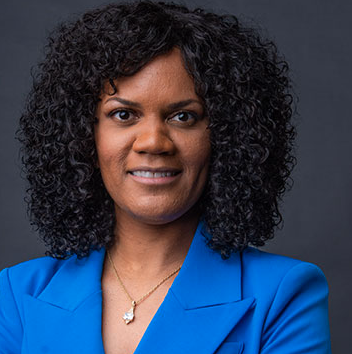
Detroit native and Councilwoman Latisha Johnson has been active in the community for 15 years and represents Detroit City Council District 4 on the east side of the city bordering Harper Woods and Grosse Pointe, a community she’s lived in most of her life. She attended Detroit Public Schools and graduated from the University of Michigan- Dearborn, where she earned a degree in finance. She began her career in Detroit’s tourism industry, marketing the city to visitors to attract spending within the local economy. Johnson began her public service in 2007 when she became vice president of the East English Village Neighborhood Association. During her tenure, she led efforts to eliminate blight, hold financial institutions accountable, and prevent residential property tax foreclosures. In 2014, she founded MECCA Development Corp. to address concerns of well-being, workforce development, youth engagement, and neighborhood revitalization. She has also has served as treasurer for the 5th Precinct Police/Community Relations Council, vice chair of the City of Detroit’s Board of Zoning Appeals; member of the Wayne Metro Community Action Agency Regional Advisory Council, and was a volunteer with Wayne State University’s AmeriCorps Urban Safety Program. SBN Detroit spoke to Johnson about her sustainability goals and about how residential development and business development go hand in hand. Q: What are your primary goals for sustainability in the city? A: One key thing is the evaluation of our internal processes. I co-chair the Small Business Task Force with two council colleagues, Mary Waters, and Angela Whitfield-Calloway. Our focus is to ensure that our requirements and practices for small businesses to bid on projects are not insurmountable. One example that came to light just recently: We had a contract come before us, and our procurement team had to make calls to companies to encourage them to bid. In a healthier environment, we should have contractors knocking on our door to bid on projects. This showed us that a lot of companies are overwhelmed by our processes. Small businesses just don’t have the resources to navigate them, so we are now trying to streamline the system and reduce paperwork and red tape. We want to find ways to help grow small businesses, particularly in the neighborhoods of Detroit. Q: In 2014, you founded MECCA Development Corp. to address concerns of well-being, workforce development, youth engagement, and neighborhood revitalization. How does this work impact and inform your role as a councilwoman? A: It definitely impacts what I do now. MECCA had four areas of focus: workforce development; residential development; seniors; and youth. The area I became passionate about – especially as we saw property values climbing – was and is residential development. Houses have become unattainable for lower-income families in this climate. Too many people cannot afford the down payments and can’t qualify for loans. Now I’m hyperfocused on affordable home ownership. This also comes from who I am as a Detroit native who grew up in a lower-income household. I have firsthand experience with these challenges. Therefore, I’m working on programs and opportunities to assist. We recently started a Down Payment Assistance Program to provide up to $25,000 for lower-income renters who want to purchase a house in the city. I’m also working on getting the city of Detroit to support Community Land Trusts. I recently worked with a group of students from the University of Michigan to understand how split-rate taxes (which tax vacant land at a higher rate than structures and improvements) would impact Detroit homeowners. I also established the Equitable Development Task Force, which focuses on addressing underserved communities through policies and programs that reduce disparities while fostering places that are healthy and vibrant. The task force may include residents, representatives from the community, labor, the business sector, as well as any other individuals interested in participating. So yes, MECCA helped shape and inform the work I do around housing and home ownership. I’m always striving to find ways to provide support to low-income families. Q: How do you think residential development impacts businesses in Detroit? A: When I look at our district, the areas that have benefited from the Strategic Neighborhood Fund – Jefferson, East Warren, and now Gratiot – are the areas in which residential properties have also stabilized. So, we know that revitalizing commercial corridors helps stabilize residential, and vice versa. More businesses will come into these areas – it’s cyclical. I’d also like to see people having the opportunity to build equity in their homes that they can pull out to start their own businesses and build generational wealth. It all connects. Years ago, when I worked at Detroit Convention and Visitors Bureau, and we hosted site inspections, we had to craft the routes to prevent taking clients through blighted commercial corridors. When commercial corridors look a certain way, it gives the impression that the neighborhoods are even worse. So, we need more of a focus on both housing and commercial corridors to become stabilized, and they depend on one another to do so. Q: What are the biggest challenges you face? A: First, the tax rate in Detroit. It’s a challenge for residents and businesses. Second, is the lack of promotion of our neighborhoods and commercial corridors to encourage businesses to establish there. No entity proactively promotes and connects entrepreneurs to these communities. There is a big opportunity there. Q: What are other opportunities for the city, and how will these affect businesses? A: As I mentioned earlier, there is an opportunity to streamline the city’s internal processes so that smaller businesses can bid on and secure projects. Another opportunity is the promotion of harmonious growth between business communities and residential communities. We have not done that well. I think businesses and communities can work together better to support one another. When a business does this, it will inherently last longer in the community And when it comes to bringing industry and manufacturing to certain areas, the city has to do a better job of ensuring that we are protecting residents.
College for Creative Studies Launches Graduate Program Toward Developing Leaders in Climate Action
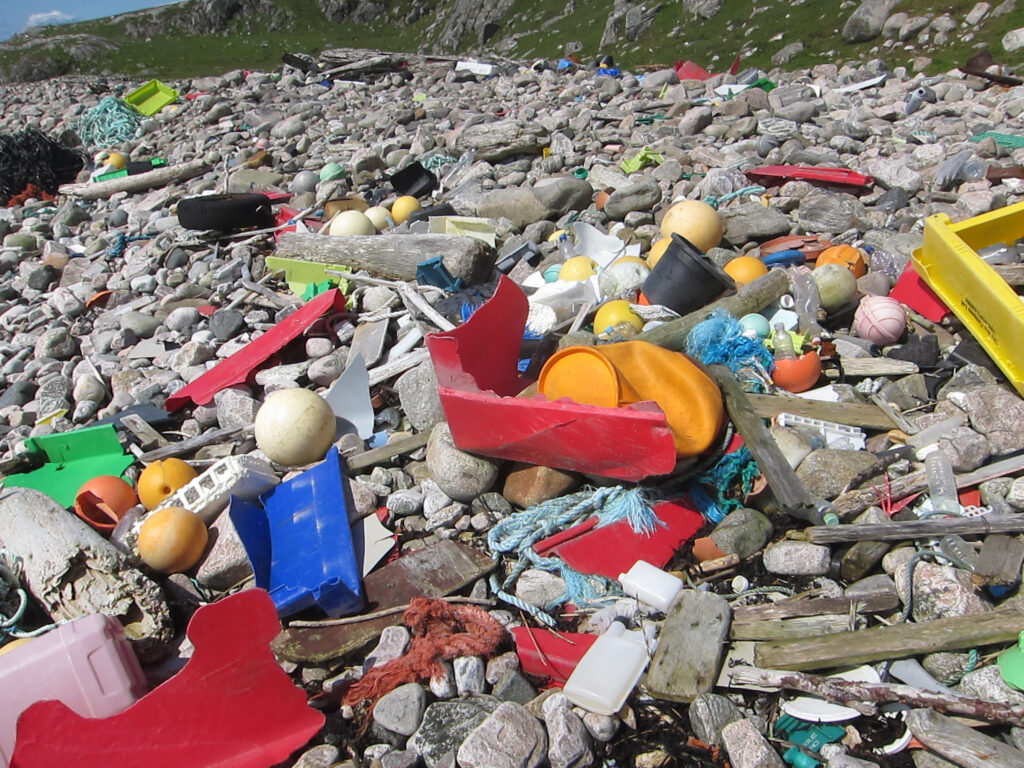
In the fall of 2023, the College for Creative Studies will launch Design for Climate Action – a new graduate program aimed at tackling the global climate action and change emergency from multiple angles. The program invites applications from designers and non-designers of all kinds, bringing together broad multidisciplinary mindsets for interdisciplinary collaboration. It will foster an understanding of zero-waste materials and processes, circular economies, civic infrastructures, and environmental stewardship. At its heart is the drive to bring about change in existing systems and transition to structures that reverse global heating and uphold climate justice and global equity. Leading the program is Dr. Ian Lambert, Dean of Graduate Studies & Research. Lambert is a designer and maker-researcher with extensive experience in academic leadership and curriculum development in higher education in the U.K., the U.S., and China. Lambert has taught sustainable design for more than 20 years and his work with ocean plastic in Scotland along with other waste streams is widely published. He has brought his work with ocean plastic to the Great Lakes and recently joined the Detroit River Coalition. For the last two years, he has been collaborating with the Charles H. Wright Museum of African American History on the d.Tree Studio – diverting dying trees from landfills to become narrative artifacts that elevate climate justice. He is a Fellow of the Royal Society of Arts, and a former advisor to the Creative Conscience Awards. SBN Detroit spoke to Lambert about the program. Q: What is the impetus behind the new Design for Climate Action Master’s Program? A: In addition to further embedding sustainability across the CCS curriculum, we are looking to highly specialize in addressing the climate crisis. This is about working toward and educating about systemic change. There are many perspectives required in tackling climate action, so the program is about foregrounding design thinking at the intersection of multiple disciplines. The program welcomes scientists, engineers, philosophers, and sociologists as well as designers and other creatives. It is the synergy formed by these different skill sets that can drive change in the climate crisis. It’s important to remember that while science presents the facts and explains what is happening, the climate crisis is a cultural crisis, a social crisis, an economic crisis, and a political crisis. It affects humankind in many different ways and it’s not just for scientists to solve. The program takes the position of stating climate problems calmly and rationally. We need to use intelligent and persuasive narratives to bring others, including business leaders and politicians, with us. The debate is often highly polarized, which is dangerous. So, it is important to temper our outrage and avoid alienating those across the divide. Q: What does it mean for CCS to offer this program? Is this kind of curriculum unique to design school offerings? A: The program is focused on action in the climate crisis and systemic change. I don’t know of any other program that takes such a multidisciplinary approach with design at its hub. Also, our grad program is growing, and part of our strategy is to consider where the needs are and identify opportunities for aligning with the activity that’s happening in Detroit. Essentially the program has three pillars that overlap and blend: The circular economy and closed-loop manufacturing and material cycles. Systems and infrastructures – How we can redesign these or make interventions and design out waste? Environmental stewardship and understanding the lasting effects of human production on our environment Q: What implications might this have for the Detroit businesses – graduates with this skill set and education coming into the workforce? A: A recent report in the Atlantic stated that the government will be spending $374 billion on fighting climate change, and some are estimating it will reach $800 billion. This will require experts of all kinds to implement and lead change within businesses, corporations, and public organizations. Experts who can galvanize collaboration and take action in multiple ways. The demand for climate design experts is only going to grow, and our graduates will go into the world with not only the expertise but the passion and capability to apply a persuasive narrative to bring about these changes. Q: Can you tell us more about bringing together broad multidisciplinary mindsets for interdisciplinary collaboration? A: At the graduate level all design programs operate at disciplinary intersections. The climate change crisis is omnipotent, and the key to this (working to solve it) is being capable of working with other areas of expertise. This is not a crisis to be dealt with by lone crusaders. It truly requires collaboration that is deep and expansive. So it’s really important to develop students into leaders who can advance this approach. When it comes to leadership, there is this concept of the T-shaped individual, where the vertical bar on the letter T represents the depth of related skills and expertise in a single field, and the horizontal bar is the ability to collaborate across disciplines with experts in other areas and to apply knowledge in areas of expertise other than one’s own. And then there are X-shaped individuals, with “executive” skills and deep expertise in a core knowledge area as well as strong leadership skills and credibility. We need both T-shaped and X-shaped skill sets to approach and address the climate crisis, and our program will work toward building these. Q: Will the students be involved in sustainability programs and projects in Detroit? A: CCS has an extensive and well-established set of partnerships and connections with industry and our students work on many sponsored and live projects. Currently, students are working with Consumers Energy to help implement EV charging services from a user experience perspective. Last year, our students worked with the Charles H. Wright Museum of African American History on redirecting dying trees from landfill to narrative objects. Our students have worked on clean air projects, food waste diversion, water security, sustainable tourism, and green mobility systems, to name a few. I’m also very proud of the CCS Color and Materials Design Students who
How Does Consumers Energy Activate Around People, the Planet, and Prosperity?
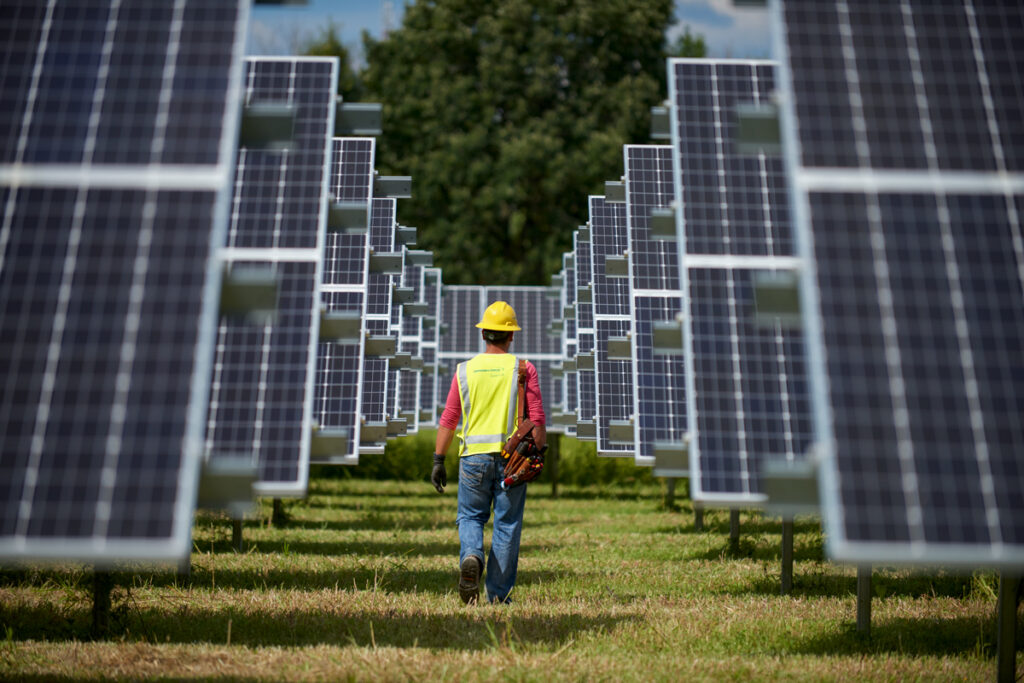
How does Consumers Energy, which provides natural gas and electricity to 6.7 million of Michigan’s 10 million residents, with 8,000+ staff members, approach sustainability? SBN Detroit spoke to Brandon Hofmeister, Senior Vice President of Governmental, Regulatory and Public Affairs for CMS Energy and Consumers Energy, about how the company executes its sustainability goals and about some of its current projects. Q: When did you begin sustainability efforts at Consumers Energy? A: From a very broad sense, the company has been focused on sustainability since it was founded. Our current intentional focus to prioritize sustainability specifically within our corporate strategy has been around for about a decade. Q: What is the organizational structure around executing your sustainability goals? A: Our corporate strategy is centered around a triple bottom line of people, planet, and prosperity with measurable goals that cascade down throughout the whole business and that are embedded in everything we do. We don’t necessarily source it to one department or team. We do have an Environment and Sustainability Council that includes top leaders and executives and officers who meet regularly to monitor progress toward key sustainability goals. We also have a Chief Diversity Officer and a focus on diversity, equity, and inclusion, and this overlaps and encompasses our sustainability objectives. It’s very cross-functional – everyone owns it and it’s embedded within all roles and levels of the company. Q; Please give some examples of initiatives and priorities in place around people, planet and prosperity. A: Regarding the planet, I would say our biggest initiative is transforming our electricity generation mix. We will retire our remaining coal plants in 2025 and move completely to clean energy, reducing carbon emissions by 60% from 2005 levels. This is a very aggressive goal but as a company, we are excited about it. From a people perspective, we are focused on dramatically improving electric reliability by hardening systems to stand up to more intense storm activity and leveraging best practices in technology and management to reduce outages. We are also deeply focused on the affordability of our services. We’re doing a lot of work to create payment and assistance and energy efficiency programs. We are also dedicated to finding ways to take cost out of our processes and the cost we pass on to our customers, so they get the best value for the services provided. This is equally important for our business customers. We must make sure electricity is cost-effective so businesses can continue to thrive and create jobs here in Michigan. Regarding prosperity, part of the triple bottom line is keeping our own business healthy and profitable for our staff and also our investors. We are expected to deliver consistent and low-risk financial results and that affects our community and the economy overall. Q: Consumers Energy employs more than 8,000 people. How do you share the vision and facilitate action? A: How we approach the goals in itself is important and I think has been impactful. We set breakthrough goals and unleash the team to find new and innovative solutions. It is challenging to set goals that we don’t yet know how to achieve, but this can also be very inspiring, as long as you give the “why” behind the goal. Our team inherently works for our friends and neighbors, and we want to deliver for them. So, whether it’s decreasing carbon emissions or increasing electric reliability, we set goals, give the why, and then let the power of the people take it forward. The outcomes are often quite remarkable and solutions we never thought possible are unveiled. Q: What do you think is one of the most impactful sustainability practices you’ve put into place to date? A: Our clean energy program is a good example. We set an ambitious goal to get to net zero carbon emissions by 2040. Within the framework of conventional wisdom, this originally appeared to be impossible. But the goal has opened up new ways of thinking. Retiring the coal plants was originally slated for 2040, but that’s been moved up to 2025 as I mentioned. We have a north star to reach and are working on this carbon goal every day. Q: What do you point to as an impactful project you are putting into place in the next three to five years? A: Electrification of vehicles is a big game changer for our industry. The company has a breakthrough goal to have a million EVs in service by 2030. This is great for the planet and great for our customers’ pocketbooks. The more electricity we all use, the more electric bills decrease. There are set costs for infrastructure, and if more people are using that infrastructure the cost per unit of electricity goes down. So, it’s a win-win. Q: How do you integrate the community and keep them informed? A: This is a huge part of our work. We spend a lot of time communicating what we are working on and why, but it’s a two-way street. We also want to understand the people and community we serve, so we conduct formal and informal stakeholder outreach. We do materiality assessments internally and externally. We engage customers and educate them on how they can save energy by considering an electric vehicle or participating in renewable energy programs. Most people don’t think about their utility service unless the power out goes out, but it’s important to continually communicate our broader mission. We spend time engaging in a variety of channels with customers to have two-way communication. Q: What advice would you give to SE Michigan businesses when it comes to laying out sustainability goals and achieving them? A: Start with what’s important to the business. Understand the impact the business is having and focus on a goal. Also engage stakeholders. Set ambitious goals and always communicate the why. It’s easier to bring people in when they are engaged versus being told. And finally, don’t have too many goals. Prioritize, set a few very ambitious and solid goals,
Dr. E’Lois Thomas, Working to Impact Lives that Have Been Underserved With Energy Solutions
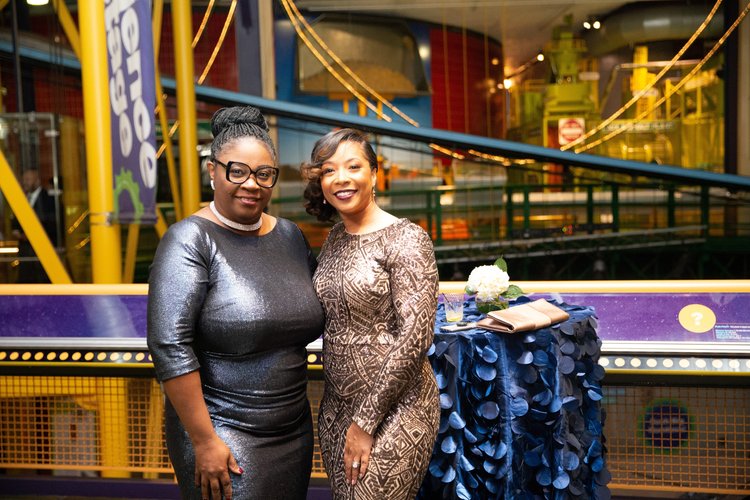
SBN Detroit interviews Dr. E’Lois Thomas, President of SEEL LLC (Solutions for Energy Efficient Logistics), a nationally certified MBE energy program implementation company that serves major utilities throughout the Midwest, South, and Northeast with expansion plans. Here, Thomas shares her thoughts on the correlation between energy resource development and expanding opportunities for disadvantaged minorities. Her leadership has helped SEEL to become one of the largest African American-owned implementation contractors working toward growth in sustainability, energy justice, and equality for all. Thomas is vice chair of the Midwest Energy Efficiency Alliance board, treasurer with Advancing Women in Energy, a member of the American Association of Blacks in Energy board, and a mentor for the Council of Women in Energy and Environmental Leadership. She is a big advocate of youth advancement and volunteers as a board member for RESULTS Mentoring, Detroit Police Athletic League (PAL), and Franklin Wright Settlements. Q: Can you tell me briefly about what work you are doing exactly with SEEL? A: I’ve been with SEEL for 11 years now and with the parent company for more than 20 years, and as president, I guide and oversee all aspects of the company’s operations and growth. Since joining the company, I have worked toward the company’s growth in an industry that is committed to combat the climate crisis. We’ve had to navigate an industry that is rapidly changing from gas and fossil fuels to electrification, renewable, and clean energy. Also, as a leading minority-owned disabled-veteran-owned company, energy access and equity are important to us. We’re intentional about including minorities and underrepresented groups in the conversation. Q: You are involved with the growth trajectory of SEEL – as such what is your vision for the future? A: We’ve been involved in the energy industry since the beginning of broad energy efficiency programs being implemented in communities. The goal then was to reduce the carbon footprint by educating utility customers about energy efficiency and retrofit their homes with energy efficiency products and services. Fast forward to today, the industry is rapidly adopting renewable and clean energy intending to become carbon neutral in the next 25 – 30 years. This provides a great opportunity to grow the company in diverse ways. In addition to offering services related to renewable and clean energy, services like weatherization, building performance, and workforce development all provide rewarding opportunities right now. Q: How will you reach these goals/this vision? A: By continuing to train the workforce of tomorrow, while making an impact on the quality of life of our current employees and the communities we serve. Training is critical, whether it’s training for skilled trades, continuous improvement, building science, energy justice, HVAC, solar, or the training of being an energy-efficiency professional with key attributes like customer service, etc. SEEL is committed to this education. Q: What are some examples of what some local programs SEEL has implemented? A: We are training up our team in renewable energy options like solar and completing pilot projects for community-based organizations and local churches. We are speaking in the community to ensure that electric vehicles include diverse communities by petitioning for inclusion and more charging stations in urban areas. We are collaborating with Detroit 2030 District which continues great work to reduce the environmental impact of buildings and operating costs for building owners/managers in Detroit. In Detroit, we were the first minority-owned corporation to join DTE’s MIGreenPower 100% clean energy at its headquarters. DTE Energy’s MIGreenPower program is among the top three voluntary renewable energy programs in the United States. Notably, MIGreenPower offers simple and affordable renewable energy programs to eligible electric customers, thereby supporting the company’s wind and solar projects. In addition, we are currently reviewing our fleet for fleet emissions reductions with a plan in place to transfer all assets by the end of 2023 to efficiency grade to reduce our carbon footprint. In the state, we also collaborate with Consumers Energy toward their clean energy goals by managing programs with their Clean Energy Plan poised to meet Michigan’s energy needs and to continue the journey to net-zero carbon emissions by 2040, and we implement the entire energy efficiency portfolio for the Upper Peninsula Power Co. (UPPCO), powering through together in one of the most rural, weather-challenged areas in America, and for Indiana Michigan Power as well. Q: What drives your passion? A: I know first-hand the disparities that exist in energy burden. I grew up on the east side of Detroit and graduated from Pershing High School in the Detroit Public Schools Community District. As a young African American student, I always aspired to help others, so what fuels me today is that every customer deserves a path to energy justice, and I have a quest to ensure that this path occurs for everyone, independent of their financial, social or economic status. Not only is energy equity a passion of mine personally and professionally with SEEL, but there is such an opportunity for our industry to impact lives and communities while reaching those that have been underserved for too long. Simply put, access to clean air is a human right, yet so many of us don’t have it. Change is overdue, so the priority is critical now. Q: Outside of SEEL you are involved in many organizations. One is the American Association of Blacks in Energy board. From your perspective, what is the correlation between energy resource development, economic growth, and minorities? A: The correlation between energy resource development, economic growth, and minorities has clearly shown a gap in the representation of minorities that organizations like AABE work to resolve. AABE is a resource for providing information and educating energy consumers from all sectors of society, with emphasis on marginalized communities ensuring that the public and private sectors are responsive to the problems, goals, and aspirations of African Americans. AABE recognizes that access to reliable and affordable energy is essential to everyone so from an inclusion standpoint, we make sure that African Americans are represented in the conversations politically, socially,


